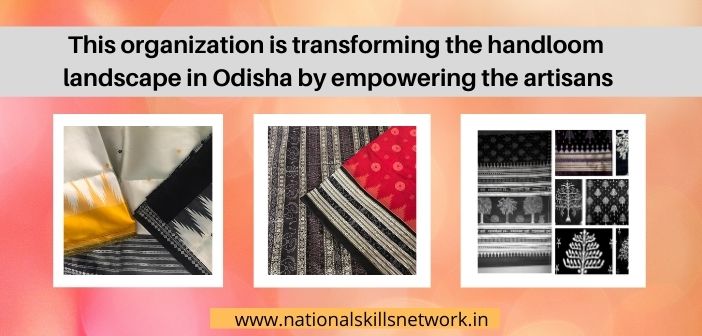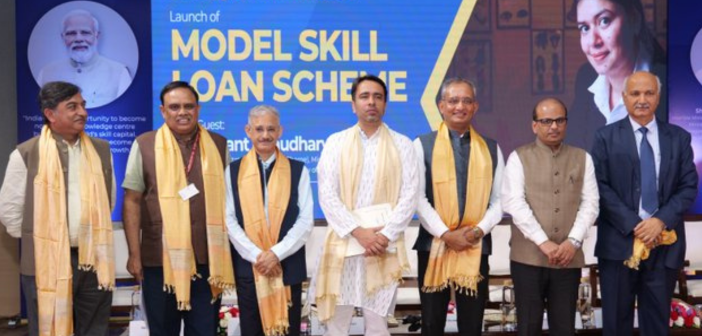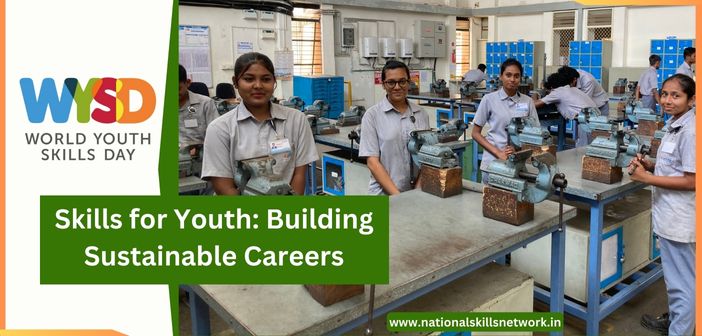
“The delicate weaves of Odisha Ikat have a landscape consisting of multiple, overlapping intricacies and forms inspired by mother nature”, says Ms. Seema Tiwari, Founder, Tarini appreciating the mesmerizing beauty of the handwoven sarees of Odisha.
While the beauty of Odisha handloom is undeniable, there is a lack of empowerment for the weavers. While there is no dearth of talent, the lack of skills for market oriented design development and exposure makes it difficult for them to keep moving forward. The challenges that they are facing despite having the skills, motivated Ms. Seema Tiwari to do something meaningful for them which was the stepping stone for the foundation of Tarini.
India is widely recognized for its diverse range of handloom and handicraft. Handlooms are the heritage of India. All the states have their unique and extravagant range of handloom weaves. Odisha, a state of arts, crafts and handlooms, has its own unique collection of handloom sarees with ethnic and traditional designs. The intriguing handwoven work on the sarees mesmerizes every saree lover with the thread work, motifs and vibrant colours make them rich and desirable.
Ms. Seema shared her experience of founding Tarini with Team NSN when we connected with her. Read on to know more.
Please tell us how you founded Tarini and what motivated you to do so?
While visiting different districts of Odisha, I came across different forms of native handloom heritage of Odisha. Every district in Odisha has its own unique handloom weave. Skilled weavers from different parts of the state exhibit native arts while weaving textile with special and unique techniques. The handloom of Odisha that are widely recognized are Sambalpuri Ikat, Bomkai silk , Pasapalli are woven in Sambalpur, Bargarh and Sonepur district, Gopalpur Tussar are woven in Jajpur and Cuttack district, Kotpad cottons are woven in Koraput district, Habaspuri woven in Kalahandi district, among others. Also, Odisha has maximum GI tags in handloom.
The tribal community of Odisha faces many challenges in terms of market oriented designs and colour development and access to raw material, natural dyes. While the artisans have all the right skills, they need the right direction to fill the gap. This encouraged me to start Tarini where we are working towards filling the gap and reviving some of the endangered weaves of Odisha in the place of origin.
If you want to launch a product as per the market standards, then you must first understand the market. So, we started to visit different states to do the market research and to learn about the preferences of customers. We focus on design and innovation, improving the market oriented knowledge of the weavers as well as improve their working conditions by upgrading their infrastructure.
Through Tarini we are dedicated to ethical and sustainable practices. We offer a climate friendly alternative to fast fashion by promoting handloom. While fast fashion makes clothes more affordable, it harms the environment to a great extent as the dyeing process discharges harmful chemicals hence polluting the land and water bodies. We are making classy garments using handloom textiles so that the nextgen consumers embrace these rather than fast fashion. We also incorporate the use of natural dyes and natural fiber like banana yarns in our designs.
While the weaver put all their hard work while creating the master pieces, they hardly get any recognition. So, we started an initiative to name our sarees with the weavers’ names. This gives them a sense of identity, visibility and keeps them motivated.
How did you cope with the challenges due to COVID-19?
We were invited by the Telangana Crafts Council. I was about to travel with two of our highly skilled weavers, however, due to lockdown the trip got cancelled. We were stuck with stocks. This is when we shifted online and started using Social Media, especially Instagram, intensively to promote our work.
There were some initial hiccups and we did face some difficulties in coordinating things online. However, the way the weavers adapted to the changes and use of technology is praiseworthy. This helped us to keep moving forward despite the lockdown. We announced a cause campaign #instasaleforinstagood on Instagram to support lives and livelihoods of the weaver of Odisha during the lockdown period. Because of the successful collaboration with the weavers and appreciation from customers we could grow exponentially during lockdown.
Social media is all about putting stories across. We also took the opportunity to start taking data of the number of women active in this sector. We have 70% women engagement in weaving and they are the backbone of the rural economy catering to weaving and allied activities. 17% of them are into weaving and the rest of them are in allied activities. The more strenuous and tedious tasks are the preparatory work, preparing the yarn, doing bandha tie and die, warping, spinning, are done by women.
How is Tarini reviving Odisha handloom, particularly the rare traditions from backward districts?
Tarini is dedicatedly working towards the revival of some major Odisha handlooms which need immediate attention. It is also working towards developing market oriented designs and colours. Tarini is closely working with experienced weavers to achieve its goals. To know more, Team NSN connected with two experienced artisans who are closely working with Tarini on two very different projects.
The Habaspuri which has been identified as one of the Geographical indicators, is an endangered textile made in Kalahandi district, Odisha. Habaspuri is a very famous handloom but has a very limited number of looms (12 looms in the place of origin). Right now, due to lockdown, only two looms are operating. The Habaspuri weaving in the place of origin is close to extinction and Tarini is working closely with weavers of Kalahandi district for the revival of the weave. Jalandhar Meher, an experienced and highly skilled artisan from Kalahandi is contributing immensely to the Habaspuri-revival initiative by Tarini. Being a master trainer, he makes sure that the young artisans are getting the right skills through his training. His hard work and dedication towards keeping the traditional alive is remarkable.
Being in sync with the market trends is important for any business. Tarini works towards developing new designs as per the trends and customer preferences. Iswar Meher, a highly skilled weaver from Bargarh district is working closely with Tarini to develop new Ikat designs. Taking his family tradition forward, he started learning the art of weaving at an early age and is weaving from the last four decades. He is a National awardee and a master trainer who provides training to the young aspiring weavers. He describes himself as the all-rounder when it comes to the entire weaving process from yarn processing to tie and dye and weaving. His enthusiasm for Odisha Ikat is incredible.
To keep their family tradition alive, Iswar Meher’s elder son joined him in the weaving process. While the experienced weavers are the backbone of Odisha handloom, the young weaver are the future.
It is reassuring to see that the younger generation is contributing towards keeping Odisha’s traditional arts and handlooms alive. These young weavers, with right guidance and skills will definitely change the face of Odisha handloom.
Also read: How HCSSC is reviving Handicrafts and Carpets industry in the time of COVID-19 crisis https://nationalskillsnetwork.in/how-hcssc-is-reviving-handicrafts-and-carpets-industry-in-the-time-of-covid-19-crisis/













